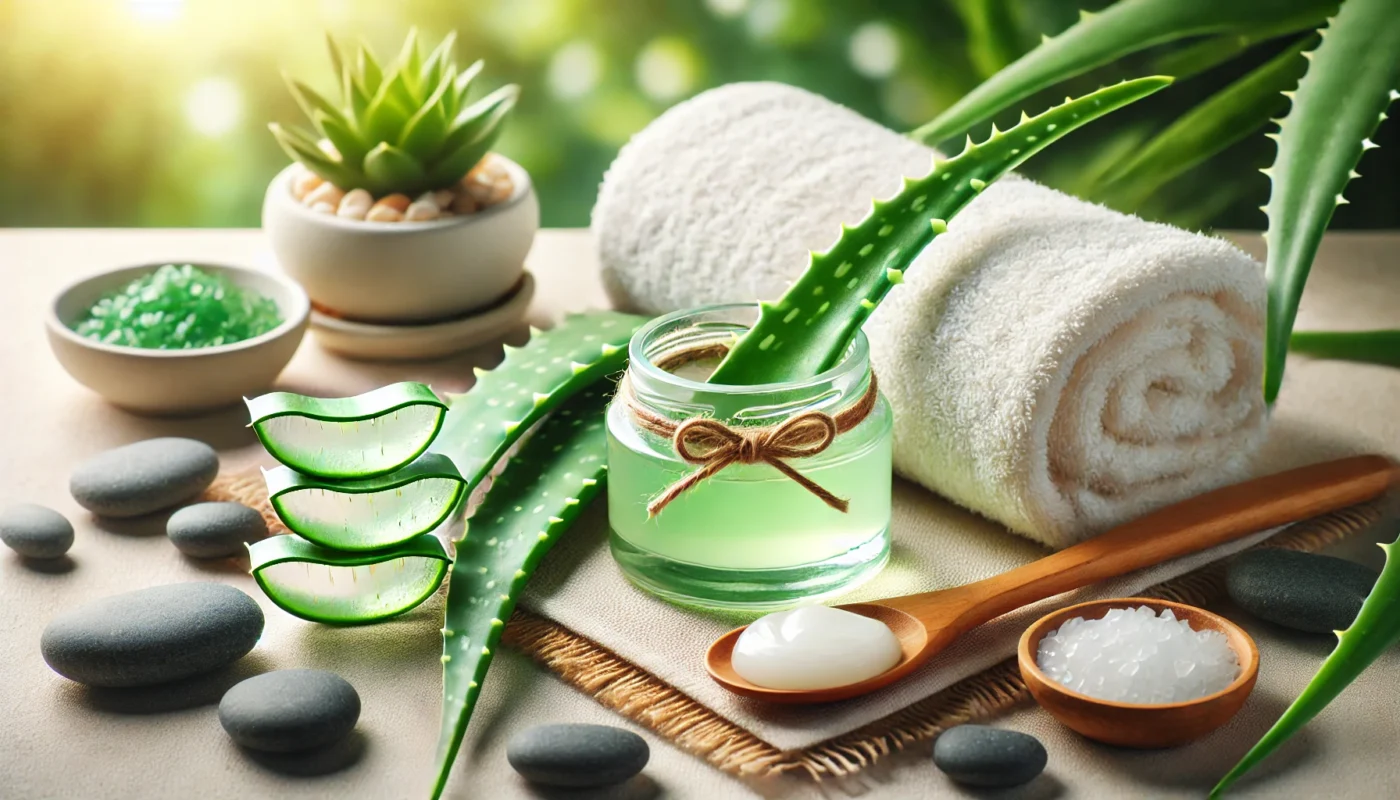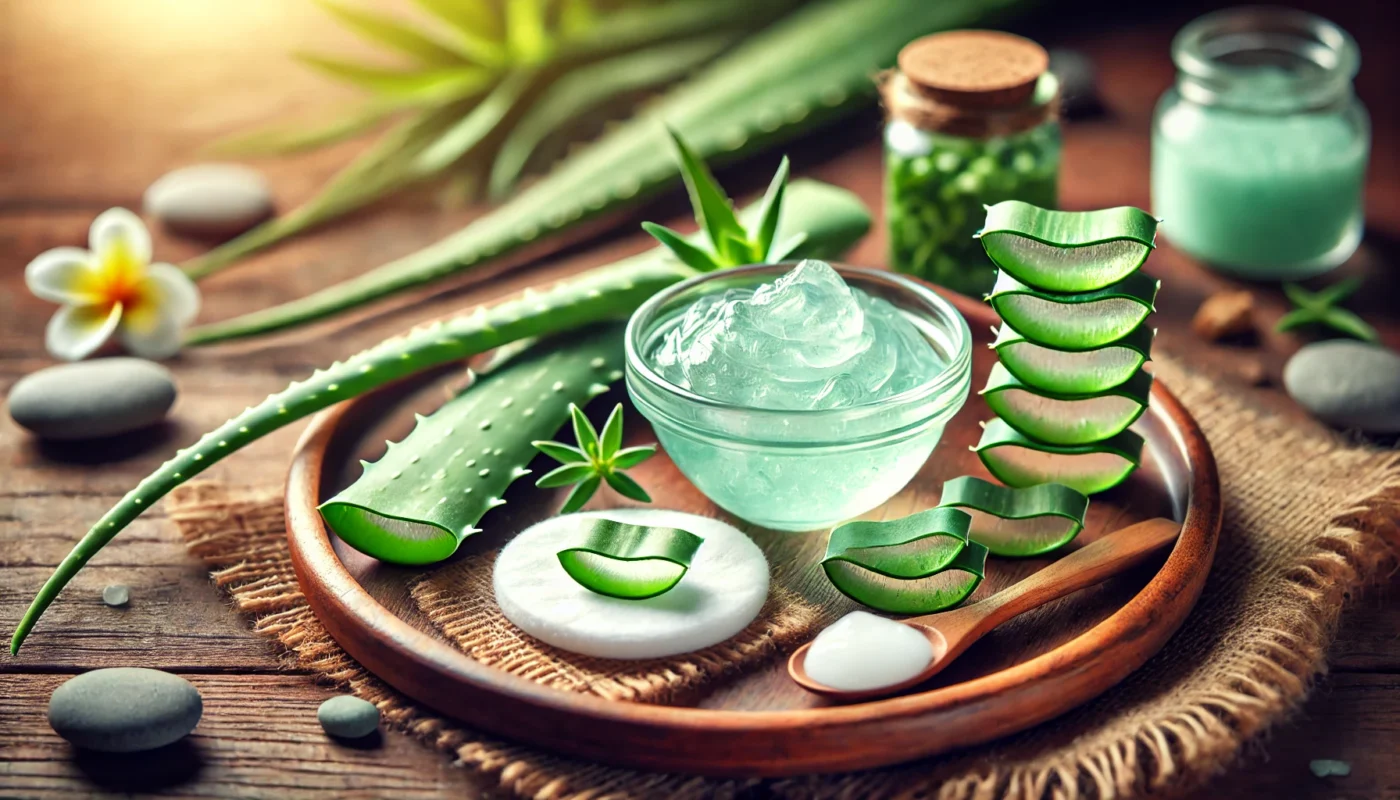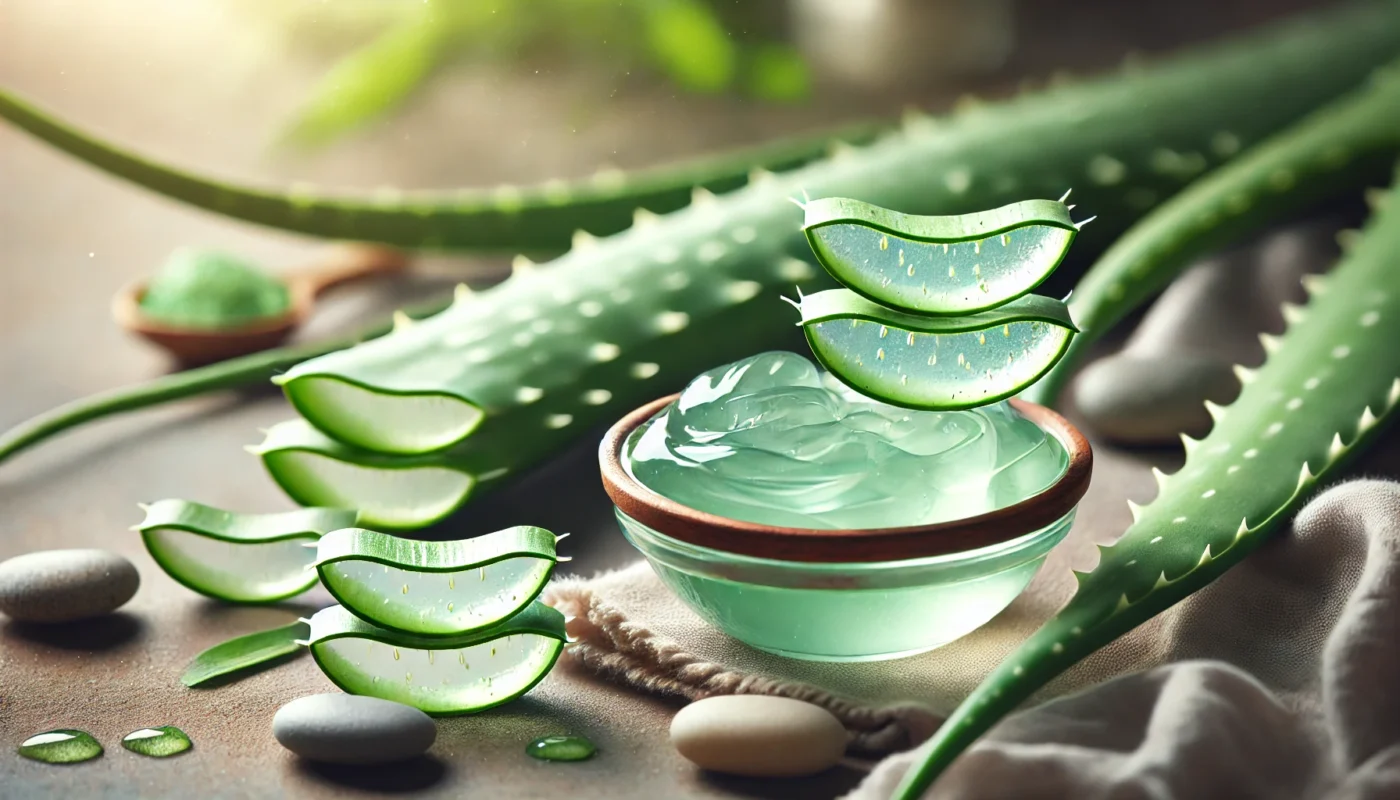When it comes to soothing burns, aloe vera gel stands out as a natural and effective remedy, often lauded for its incredible healing properties. But what makes aloe vera so beneficial for burn relief, and how can you harness its power? In this comprehensive guide, we’ll delve into the myriad benefits of using aloe gel for burns, backed by scientific research and practical advice.
You may also like: Home Remedies: Fight Cut Infections Naturally
Understanding Aloe Vera
Aloe vera is a succulent plant that has been used for centuries in traditional medicine, especially for its skin-healing properties. The gel extracted from its leaves contains a rich concoction of vitamins, minerals, enzymes, and amino acids, making it a powerhouse of health benefits.
The Historical Use of Aloe Vera
The history of aloe vera dates back to ancient civilizations. Egyptians referred to it as the “plant of immortality,” and it was used in the embalming process. In ancient Chinese medicine, aloe vera was used to treat fungal diseases. Similarly, the Greeks and Romans used it to heal wounds and treat skin conditions. This long-standing history underlines its effectiveness and the trust various cultures have placed in it.
Nutritional Composition of Aloe Vera
Aloe vera is loaded with over 75 active compounds, including vitamins A, C, and E, which are antioxidants that combat free radicals. It also contains vitamin B12 and folic acid, which are important for maintaining overall health. The presence of essential minerals like calcium, magnesium, zinc, and selenium further enhances its therapeutic potential. These nutrients work synergistically to promote skin health and repair.
Extraction of Aloe Vera Gel
Extracting aloe vera gel is a simple process but requires some care to ensure purity. Begin by selecting a thick, mature leaf from the outer sections of the plant. After cutting the leaf, allow the yellow latex to drain as it can cause skin irritation. Carefully slice open the leaf and scoop out the clear gel. This gel can then be stored in a clean container for use. Proper extraction ensures the gel retains its full potency and efficacy.
Why Aloe Vera is Good for Burns
The magic of aloe vera gel lies in its unique composition. It contains compounds like polysaccharides, which aid in skin repair and regeneration, and glycoproteins, which help in reducing pain and inflammation. Together, these elements make aloe vera an excellent choice for treating burns.
Polysaccharides and Skin Repair
Polysaccharides are key components in aloe vera that are responsible for its skin-repairing abilities. They stimulate fibroblast activity, which is essential for collagen synthesis and skin regeneration. This leads to faster healing of the damaged skin cells, minimizing the risk of scarring and promoting healthier skin restoration.
Glycoproteins and Pain Reduction
Glycoproteins play a crucial role in reducing pain associated with burns. They act by inhibiting the body’s pain response mechanism, providing immediate relief. Additionally, glycoproteins help in reducing inflammation, leading to decreased redness and swelling, which is often associated with burn injuries.
Moisturizing and Hydrating Effects
Aloe vera gel is an excellent natural moisturizer. It hydrates the skin without leaving a greasy residue, making it ideal for burn treatment. Hydration is critical in burn recovery as it prevents the skin from drying out and cracking, which can lead to further complications. The gel’s hydrating properties also soothe the skin, offering a cooling effect that further alleviates discomfort.

The Science Behind Aloe Vera’s Healing Properties
Research has shown that aloe vera gel can significantly accelerate the healing of burns. A study published in the Journal of Medical Plants Research demonstrated that aloe vera gel not only speeds up the healing process but also enhances the integrity of the skin tissue.
Evidence from Clinical Studies
Several clinical studies have documented the efficacy of aloe vera in treating burns. Research indicates that aloe vera gel can reduce the healing time of burns by up to 9 days compared to conventional treatments. This rapid healing is attributed to the gel’s ability to enhance cell proliferation and migration, crucial steps in tissue regeneration.
Skin Integrity and Regeneration
Aloe vera not only speeds up the healing process but also strengthens skin integrity. It promotes the synthesis of collagen and elastin fibers, which are vital for maintaining the skin’s structural integrity and elasticity. This results in stronger, more resilient skin that is less susceptible to future injuries.
Cellular Mechanisms of Healing
The healing properties of aloe vera extend to the cellular level. It enhances the activity of macrophages and keratinocytes, cells that play a pivotal role in wound healing and skin regeneration. By boosting the function of these cells, aloe vera ensures effective and efficient healing, reducing the risk of infection and scarring.
Aloe Vera’s Anti-Inflammatory Benefits
One of the primary reasons aloe vera is effective for burn relief is its anti-inflammatory properties. The gel reduces swelling and redness, providing immediate comfort and relief.
Reduction of Swelling and Redness
Inflammation is a natural response to injury, but excessive inflammation can delay healing. Aloe vera gel contains compounds like bradykinase, which help in reducing excessive inflammation. This results in decreased swelling and redness, providing immediate visual and sensory relief from burn discomfort.
Comfort and Immediate Relief
The cooling sensation of aloe vera gel provides instant comfort to burned skin. This is particularly beneficial in the initial stages of burn treatment, where soothing relief can significantly improve comfort levels. The gel’s anti-inflammatory action complements its cooling effect, ensuring a holistic approach to burn relief.
Long-term Anti-Inflammatory Effects
Beyond immediate relief, aloe vera’s anti-inflammatory benefits extend into the long term. Regular application helps maintain reduced levels of inflammation, ensuring continuous comfort and supporting the healing process. This sustained action is crucial for preventing complications and promoting complete recovery.

Antibacterial and Antifungal Properties
Aloe vera gel acts as a natural antibacterial and antifungal agent, which is crucial in preventing infections in burn wounds. This protective effect is particularly beneficial for those with compromised skin integrity.
Natural Antibacterial Agents
The gel contains compounds like anthraquinones and saponins, which have natural antibacterial properties. These agents inhibit the growth of bacteria on the skin, reducing the risk of infections that can complicate burn injuries. By keeping the wound clean, aloe vera supports the natural healing process.
Protection Against Fungal Infections
Burns can create an environment conducive to fungal infections. Aloe vera’s antifungal properties combat this risk, ensuring the burn area remains free from fungal growth. This is particularly important in areas with high humidity, where fungal infections are more prevalent.
Enhancing Skin’s Protective Barrier
Aloe vera not only fights infections but also strengthens the skin’s natural barrier. By promoting the production of keratinocytes, aloe vera enhances the skin’s ability to fend off microbial invasion. This dual action of protection and enhancement ensures a comprehensive approach to burn wound care.
How to Use Aloe Vera for Burns
Step-by-Step Guide
- Harvesting the Gel: If you have an aloe vera plant, cut a mature leaf and extract the gel by slicing the leaf open. Be sure to remove any yellowish latex, as it can irritate the skin.
Harvesting aloe vera gel involves selecting the right leaf to ensure maximum efficacy. Choose a leaf that is thick and mature, as it contains the most gel. After cutting, allow the leaf to sit upright for a few minutes to let the yellow latex drain, which can cause irritation if applied to the skin.
- Application: Gently clean the burn area with mild soap and water. Apply a thin layer of aloe gel directly onto the burn.
Before applying aloe vera gel, it is important to clean the burn area to remove any debris or contaminants. Use a mild soap and lukewarm water to gently cleanse the skin. Once clean, apply a thin layer of aloe vera gel, ensuring it covers the entire affected area for maximum benefit.
- Repeat: Reapply the gel two to three times a day to keep the area moist and promote healing.
Consistency in application is key to achieving optimal results. Reapply the aloe vera gel two to three times daily. Regular application keeps the burn moist, which is crucial for preventing the skin from drying out and cracking, thus supporting the healing process.
Aloe Vera Ointments and Creams
For those without access to fresh aloe, over-the-counter aloe vera ointments and creams are a great alternative. Ensure that the product contains a high concentration of pure aloe vera gel for maximum efficacy.
Commercial aloe vera products are a convenient option for those who do not have access to fresh plants. When choosing a product, check the label for a high percentage of pure aloe vera content. Products with added fragrances or alcohols may irritate the skin, so opt for those with minimal additives.
These ointments and creams are formulated to provide the same benefits as fresh gel. They are easy to apply and often come in convenient packaging, making them ideal for on-the-go use. Always patch test a new product to ensure compatibility with your skin.
Many commercial aloe vera products are enriched with additional ingredients that enhance their healing properties. Look for products containing vitamin E or other skin-nourishing compounds to boost the overall effectiveness of the treatment.
Addressing Common Concerns
Does Aloe Vera Burn the Skin?
While aloe vera is generally soothing, some individuals may experience a burning sensation upon application. This reaction is typically mild and temporary. However, if the sensation persists, it’s advisable to discontinue use and consult a healthcare professional.
Most people find aloe vera gel soothing, but individual reactions can vary. A mild burning sensation may occur due to the skin’s sensitivity or an allergic reaction. This is usually temporary and should subside shortly after application.
If the burning sensation is intense or persists, it may indicate an allergy or sensitivity to aloe vera. In such cases, discontinue use immediately and seek medical advice. A healthcare professional can provide guidance and suggest alternative treatments if necessary.
To prevent adverse reactions, perform a patch test before using aloe vera extensively. Apply a small amount of gel to a discreet area of skin and monitor for any signs of irritation or discomfort over 24 hours.
Can Aloe Vera Help All Types of Burns?
Aloe vera is most effective for first-degree burns and minor second-degree burns. For more severe burns, it’s crucial to seek medical attention immediately.
First-degree burns, which affect the outermost layer of skin, respond well to aloe vera treatment. The gel’s soothing and healing properties provide relief from pain and aid in recovery. Similarly, minor second-degree burns, characterized by blisters, can benefit from aloe’s healing effects.
For more severe burns, such as deep second-degree or third-degree burns, professional medical treatment is necessary. These burns require specialized care to prevent complications and promote healing. Aloe vera can be used as a complementary treatment under medical supervision.
It’s important to assess the severity of a burn before deciding on a treatment approach. If in doubt, consult a healthcare provider to determine the best course of action and ensure optimal recovery.

Practical Tips for Optimal Results
- Consistency is Key: Regular application is essential for optimal healing. Ensure the burn area remains moisturized with aloe gel throughout the day.
Consistency in application is crucial for achieving the best results. Apply aloe vera gel regularly to maintain moisture levels in the burn area. This not only aids in healing but also prevents the skin from becoming dry and uncomfortable.
- Storage: Store aloe vera gel in a cool, dark place to preserve its properties. Freshly extracted gel can be refrigerated for a few days.
Proper storage of aloe vera gel is important to retain its efficacy. Keep the gel in a cool, dark place to prevent degradation. If using freshly extracted gel, store it in the refrigerator to extend its shelf life and maintain its potency.
- Patch Test: Before applying aloe gel extensively, conduct a patch test on a small skin area to rule out any allergic reactions.
A patch test is a simple precaution to ensure aloe vera gel is safe for your skin. Apply a small amount to an inconspicuous area and wait 24 hours for any adverse reactions. This step is especially important for those with sensitive skin or allergies.
Real-Life Success Stories
Many individuals have experienced remarkable healing with aloe vera gel. For instance, a fitness enthusiast recovering from a severe sunburn found relief and rapid recovery by applying aloe gel consistently. Such anecdotal evidence, coupled with scientific backing, underscores aloe vera’s effectiveness in burn management.
Anecdotal Evidence of Aloe Vera’s Efficacy
Aloe vera’s reputation is bolstered by numerous anecdotal success stories. Many people have shared their experiences of using aloe vera gel to treat burns, citing faster healing times and reduced discomfort. These personal accounts highlight the practical benefits of aloe vera and encourage others to consider it as a viable treatment option.
Case Studies and Testimonials
Case studies and testimonials provide valuable insights into aloe vera’s real-world applications. For example, individuals with sunburns, kitchen burns, and even radiation burns have reported positive outcomes after using aloe vera gel. These testimonials, combined with scientific research, offer a comprehensive view of aloe vera’s potential in burn treatment.
The Role of Aloe Vera in Everyday Health
Beyond burns, aloe vera plays a role in promoting overall skin health. Its soothing properties make it a popular choice for treating various skin conditions, such as eczema, psoriasis, and acne. The versatility of aloe vera gel makes it an essential component of any natural skincare regimen, demonstrating its broader applications beyond burn treatment.
Conclusion
Aloe vera gel is a versatile and potent natural remedy for burn relief. Its anti-inflammatory, antibacterial, and skin-healing properties make it an invaluable addition to your first-aid arsenal. Whether you opt for fresh gel or commercial products, incorporating aloe vera into your burn treatment regimen can offer significant benefits and promote faster recovery.
In summary, understanding and utilizing aloe vera’s full potential can empower you to manage burns effectively and naturally. By adhering to the practical tips and insights provided, you can harness this ancient remedy’s benefits and ensure optimal skin health and recovery.
Further Reading:
Burn Relief Guide: 5 Quick Tips for Home Treatment
Why Aloe Vera for Sunburn May Be Just What You Need
aloe vera, burn treatment, skin health, natural remedies, first aid, skincare, healing properties, vitamin E, patch test, anecdotal evidence, skin conditions, anti-inflammatory, antibacterial, recovery, sunburn, eczema, psoriasis, acne
Important Note: The information contained in this article is for general informational purposes only, and should not be construed as health or medical advice, nor is it intended to diagnose, prevent, treat, or cure any disease or health condition. Before embarking on any diet, fitness regimen, or program of nutritional supplementation, it is advisable to consult your healthcare professional in order to determine its safety and probable efficacy in terms of your individual state of health.
Regarding Nutritional Supplements Or Other Non-Prescription Health Products: If any nutritional supplements or other non-prescription health products are mentioned in the foregoing article, any claims or statements made about them have not been evaluated by the U.S. Food and Drug Administration, and such nutritional supplements or other health products are not intended to diagnose, treat, cure, or prevent any disease.

